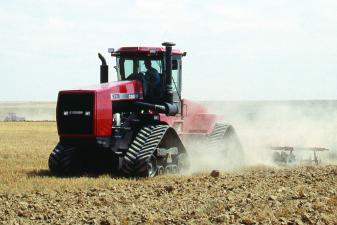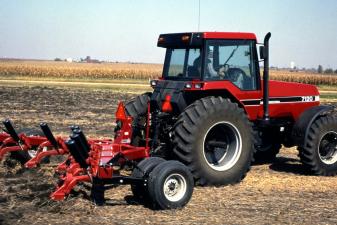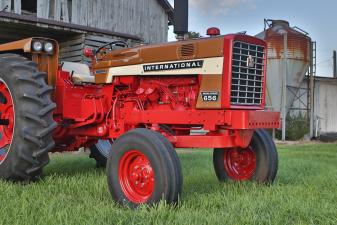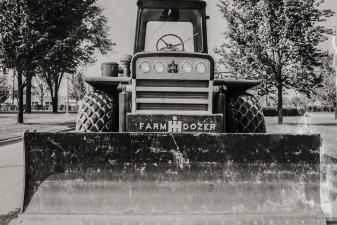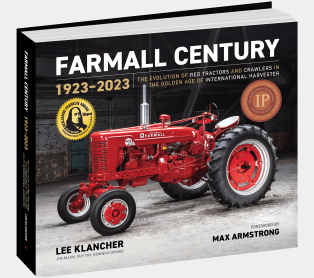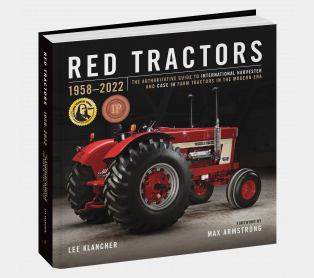International 656

Destined to replace the 06 series, the 56 series was introduced in 1965 with a single model: the 656. International’s Farmall 656 was billed as a 12-month worker, efficient enough to handle lighter utility work and powerful enough to pull a 4-5 bottom plow.
The Farmall 656 was released as an individual model without much fanfare. In the first production year, only Farmall versions of 656 were available. Customers could order their 656 with one of two available six-cylinder engines. The C-263 gasoline or LP engine provided about 64 horsepower at the power takeoff. The D-282 diesel offered about the same power but with more torque, longevity, and fuel efficiency.
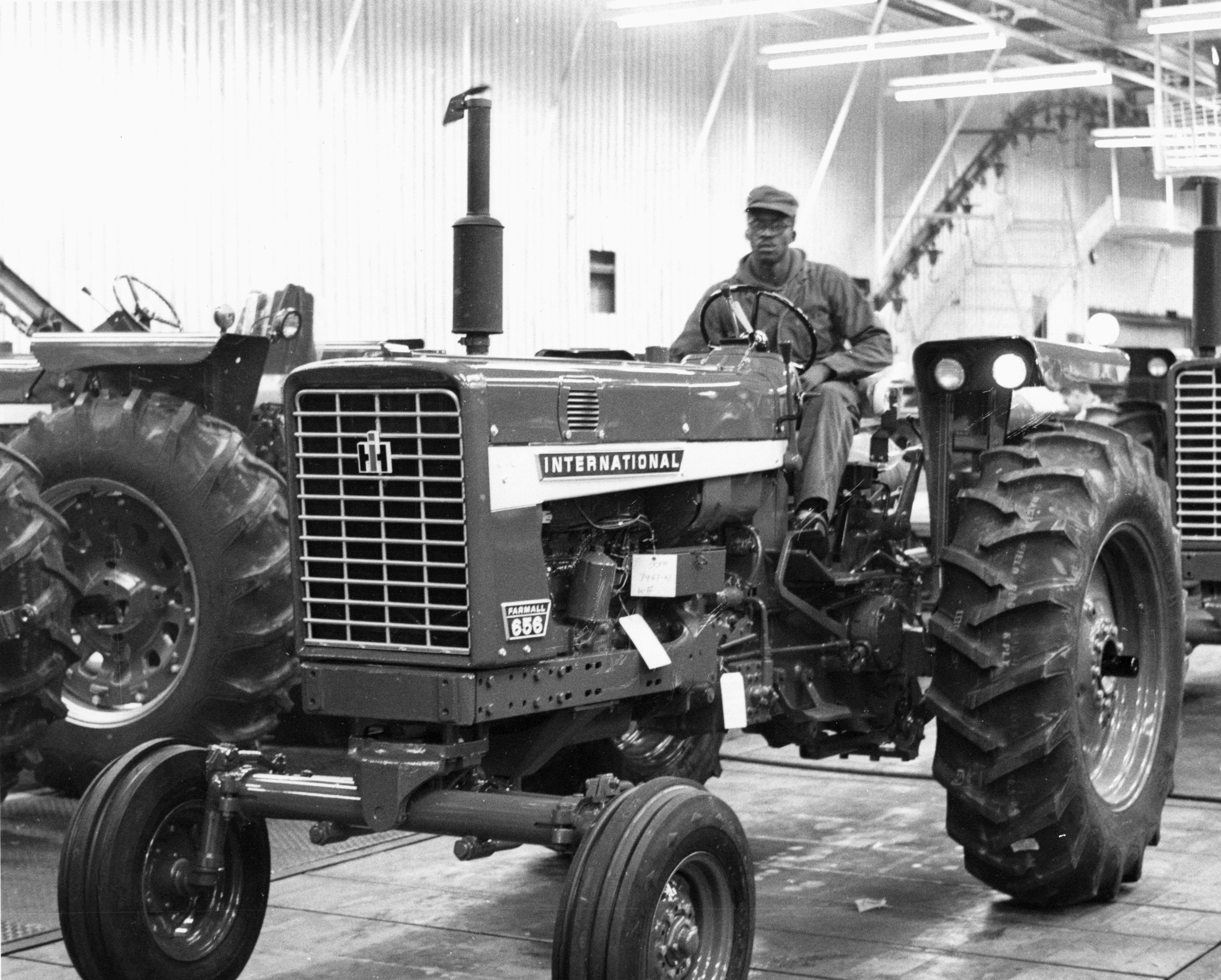
A worker drives a later-model Farmall 656 off the line on November 15, 1968. Note that the side panel sports the “International” label and “Farmall” has been relocated to the model badge. Wisconsin Historical Society / 24149
Power from either engine was transmitted to the rear wheels through a 12-inch Dyna-Life single-dry-disc clutch, five-speed sliding-spur-gear agricultural transmission with gear reduction at the differential and bull-gear type final drives. An optional Torque Amplifier doubled the number of available gears to 10, with high/low shift on the fly for each gear. Tractors without the TA option could be ordered with a forward-reverse attachment that yielded five forward gears with five reverse speeds that were slightly higher than their forward counterparts. This shuttle-like innovation made loader work and other repetitive forward-reverse operations with the 656 a breeze.
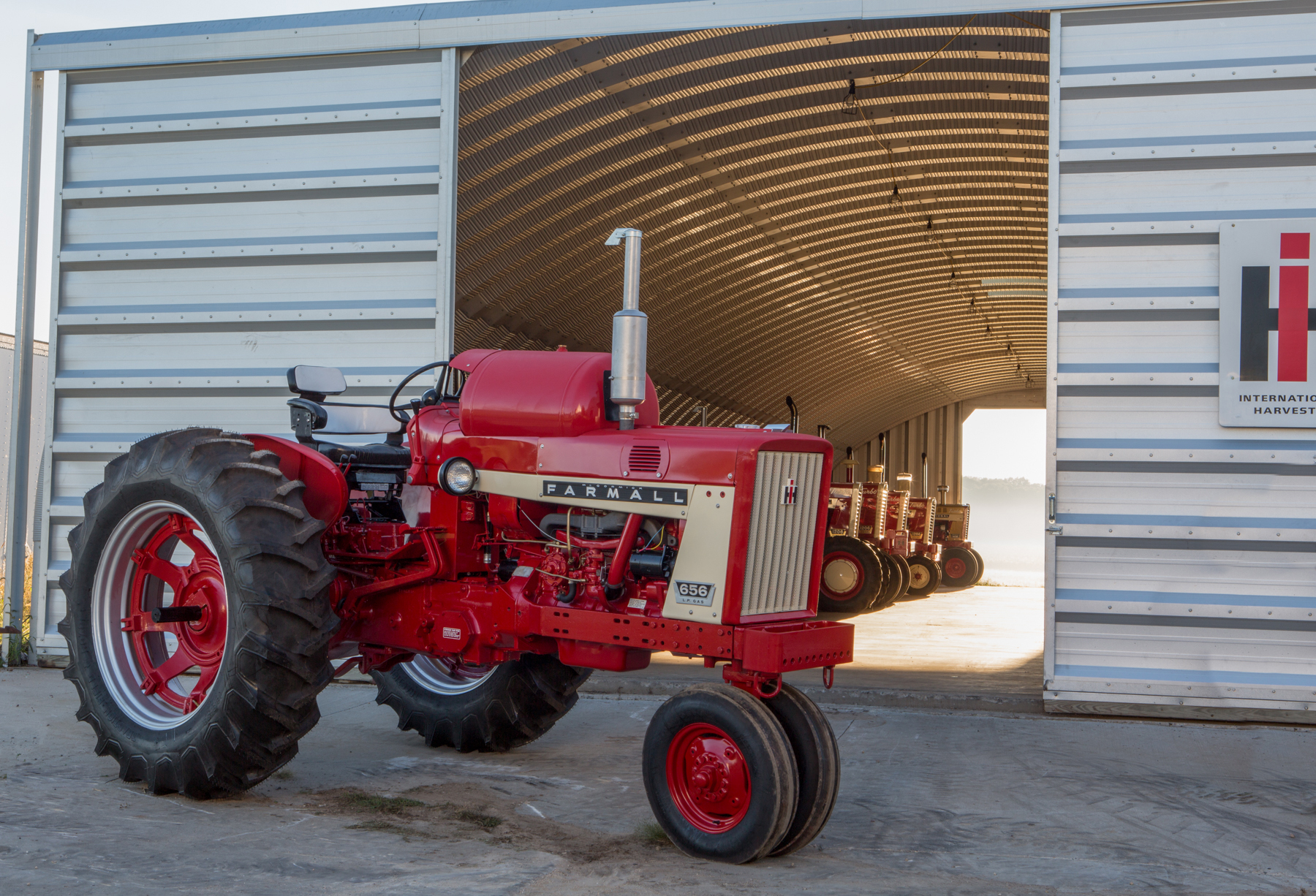
The model badge made it easy to tell when a Farmall 656 was equipped to burn LP gas—in case you missed the fuel tank protruding through the hood. Ken Huber tractor collection / Lee Klancher
The 656 offered hydraulic capacity to spare. In the 12-gpm primary hydraulic system, 3.5 gpm were diverted to run the fully hydrostatic power-steering system. The remaining 8.5 gpm of capacity was used to lubricate the transmission and to power the remotes. A completely separate 7.5-gpm pump provided power for the tractor’s hitch, and this system’s capacity supplemented the primary system when the hitch was not in use. Tractors with the optional power-shift power takeoff had an additional 3-gpm system to operate the PTO’s hydraulic clutch. The ample hydraulic capacity and the hydrostatic power steering made the 656 Farmall a very versatile machine.
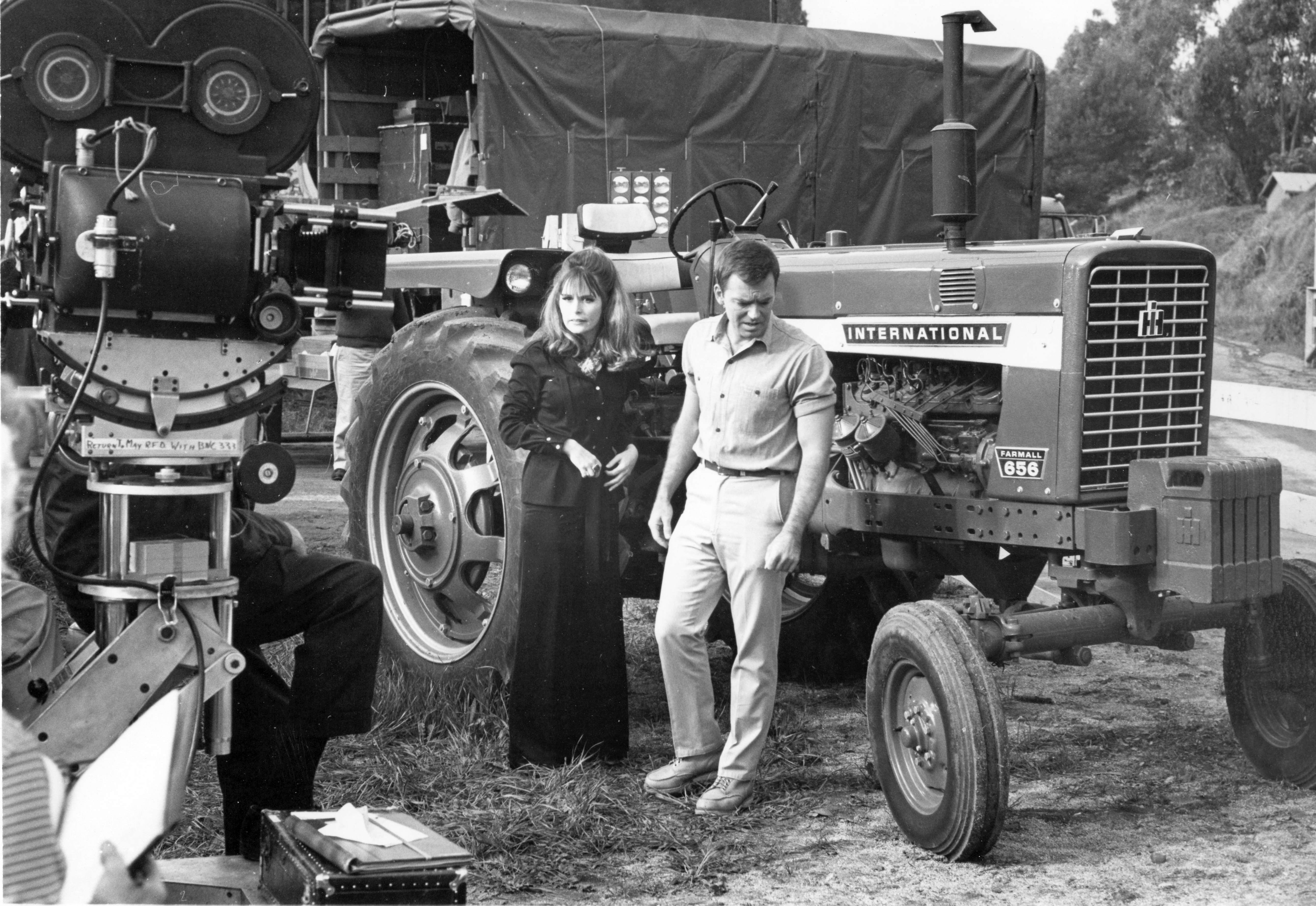
Actor Ken Berry and actress Marianna Hill with a Farmall 656 tractor on the set of the television show Mayberry RFD. The tractor was a prop for the episode titled “Millie’s Girlfriend” that aired on March 24, 1969. Wisconsin Historical Society / 6939
Principal variants of the Farmall 656 built in the first partial year of production included High-Clear and the Western Special. The High-Clear offered 37- and 34-inch clearance under the rear and front axles, respectively, compared with 15 and 21 inches. The Western Special was not a standard, but rather a Wheat Land variant based on the Farmall chassis. This tractor had a more enclosed operator’s station, shockproof lights, the PTO with power shift hydraulic clutch, and an optional cab. Unlike most standards, though, it still had adjustable axles and the Farmall’s ground clearance. By 1966, the International utility version of the 656 was available in standard and High-Clear variations. By the end of 1966, nearly 16,000 656 tractors had been built.
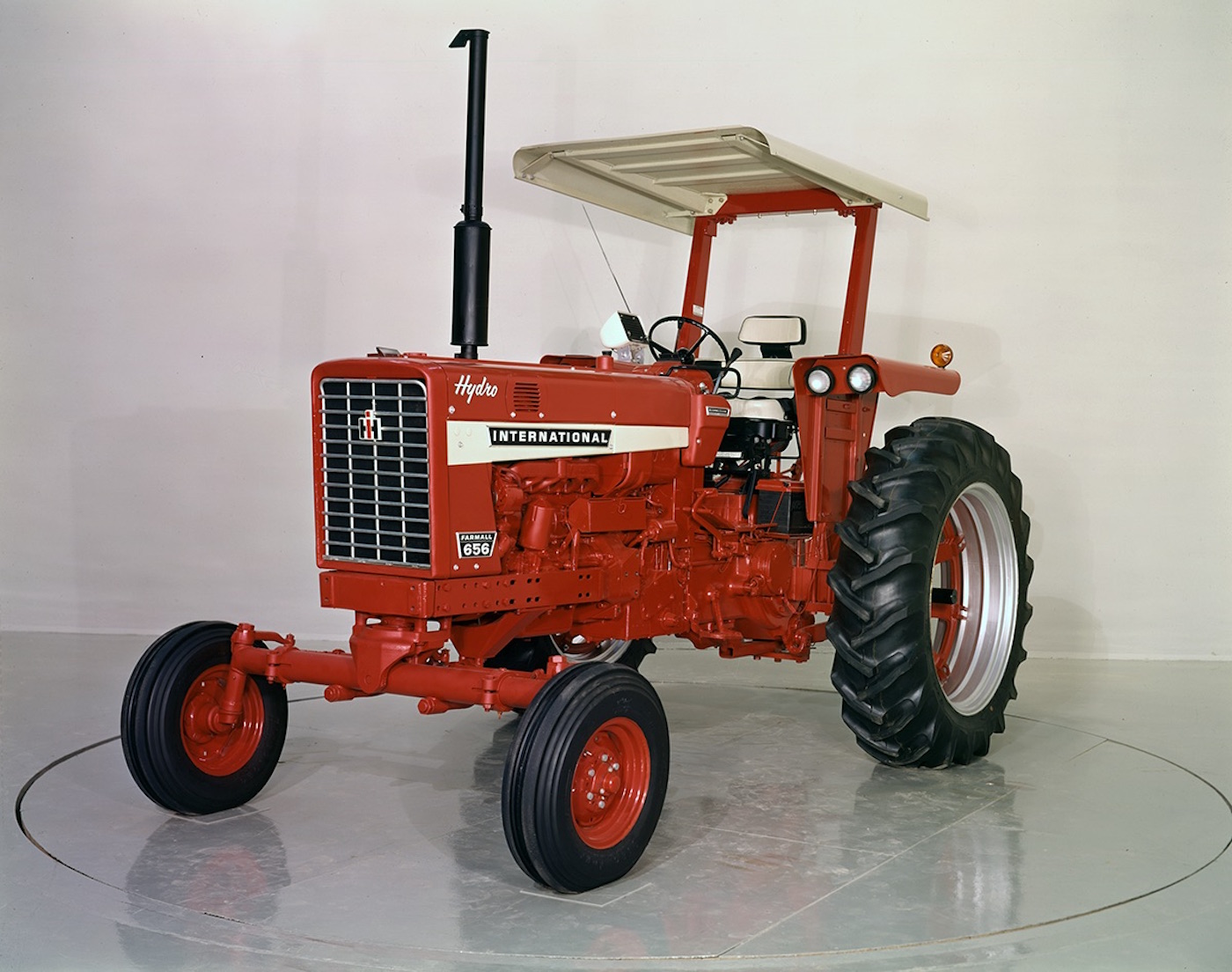
Studio shot of an International Farmall 656 Hydro tractor equipped with the adjustable wide-front axle and two-post canopy, which was famous for reverberating and thus rendering the optional fender radio practically worthless. Wisconsin Historical Society / 25318
In 1967, International introduced slightly restyled Farmall version of the 656 with a modified grille housing and a new tubular steel grille that replaced the white mesh grille on the earlier models. Both utility and row-crop versions of the tractor now bore the label “International” on the hood’s side panels although the row-crop version had “Farmall” stamped beneath the number on the badge located on the sides of the grille housing. The 656 officially replaced the 606 that year.
The 656 was for the most part unchanged with one very significant exception: the addition of both utility and row-crop versions with an all-new IH -designed hydrostatic transmission. According to an article in the June 8, 1967, issue of Machine Design magazine, Harvester chose the 656 as the platform to introduce a hydrostatic transmission because it was the company’s most popular tractor. The 656 Hydro’s transmission was the result of more than a decade of work that included experiments with heavy-duty torque converters and fluid-drive transmissions from the automotive industry, as well as hydraulic pumps plumbed to individual wheel motors. In the end, the company achieved a design similar to the hydrostatic transmission produced by the Sundstrand Corporation for use in the company’s widely successful Cub Cadet line. Unlike the Sundstrand unit, though, both the hydraulic pump and motor had variable-displacement cylinders in the 656’s transmission.
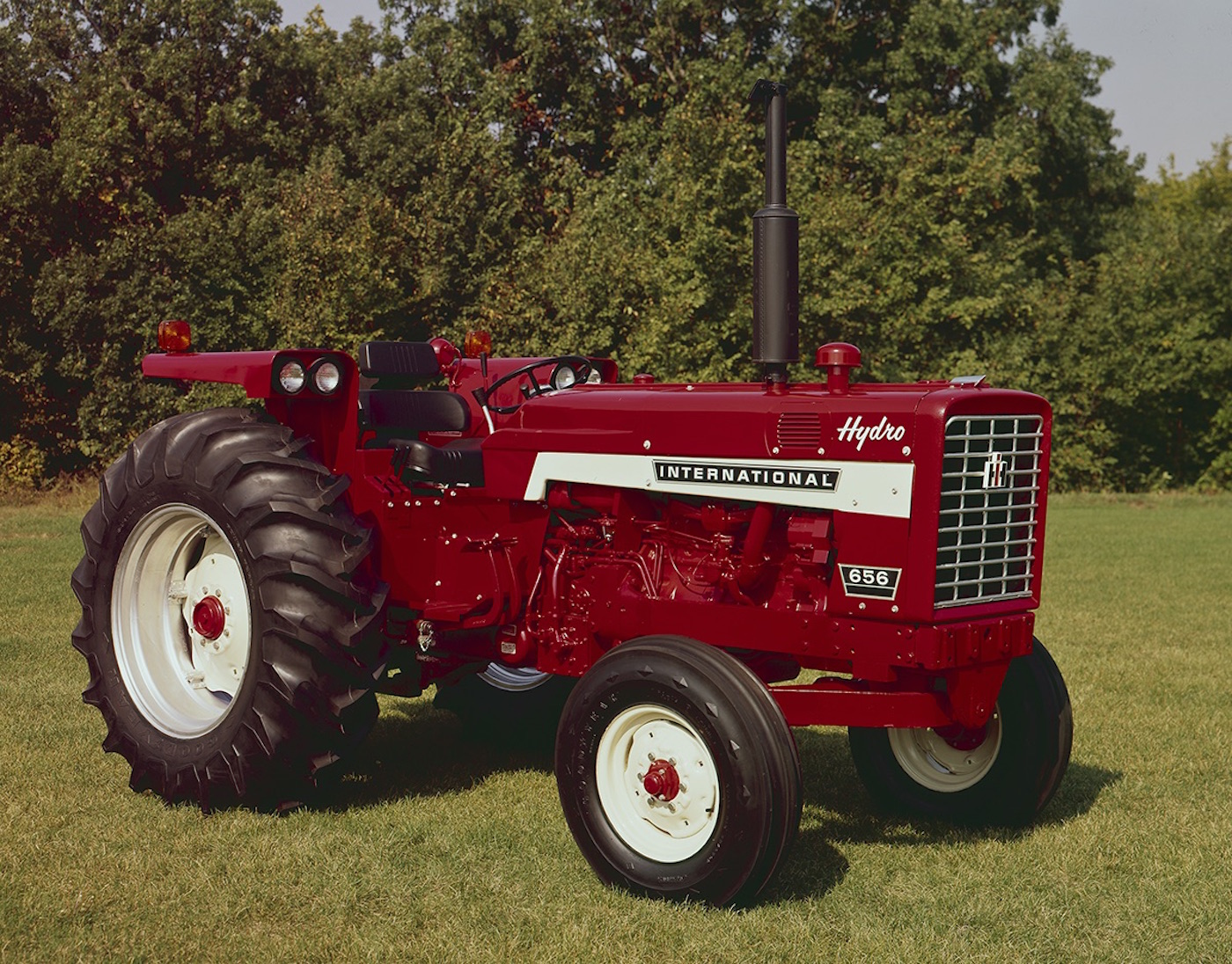
Note the nonadjustable sweptback front axle on this International 656 Hydro Utility that helped make it a very maneuverable machine. Wisconsin Historical Society
As with the gear-drive 656 tractors, the 656 Hydro models were available with the C-263-cubic-inch gasoline or D-282-cubic-inch diesel engines. The 656 Hydro’s engines were governed at 2,300 rpm rather than 1,800, which provided about 66 horsepower at the power takeoff and 52 horsepower at the drawbar in both diesel and gas versions. Power from the engine was transmitted to the ground through the hydrostatic transmission via a two-speed Hi Lo gearbox to a conventional differential and bull-gear final drive. In high range, respective forward and reverse tractor speeds of 0–20 and 0–9 miles per hour were possible, while in low range speeds of 0–8 mph (forward) and 0–4 miles per hour (reverse) were possible.
Speed selection was accomplished with two levers mounted on either side of the steering pedestal, much like the TA and gear-selector levers on the gear-drive 656s. On the left-hand side, the operator could select variable forward or reverse speeds by sliding the speed ratio control handle forward or backward.
The speed ratio selector’s guide slot was designed so that the forward and reverse positions were separated by a horizontal step in the neutral position, which made it impossible to overshoot neutral. And even though the 656 Hydro was a clutchless design, engineers added an inching pedal for panic stops (and the operator’s psychological comfort). This pedal simply dumped the hydraulic pressure from the pump side of the transmission, which caused the tractor to come to a stop.
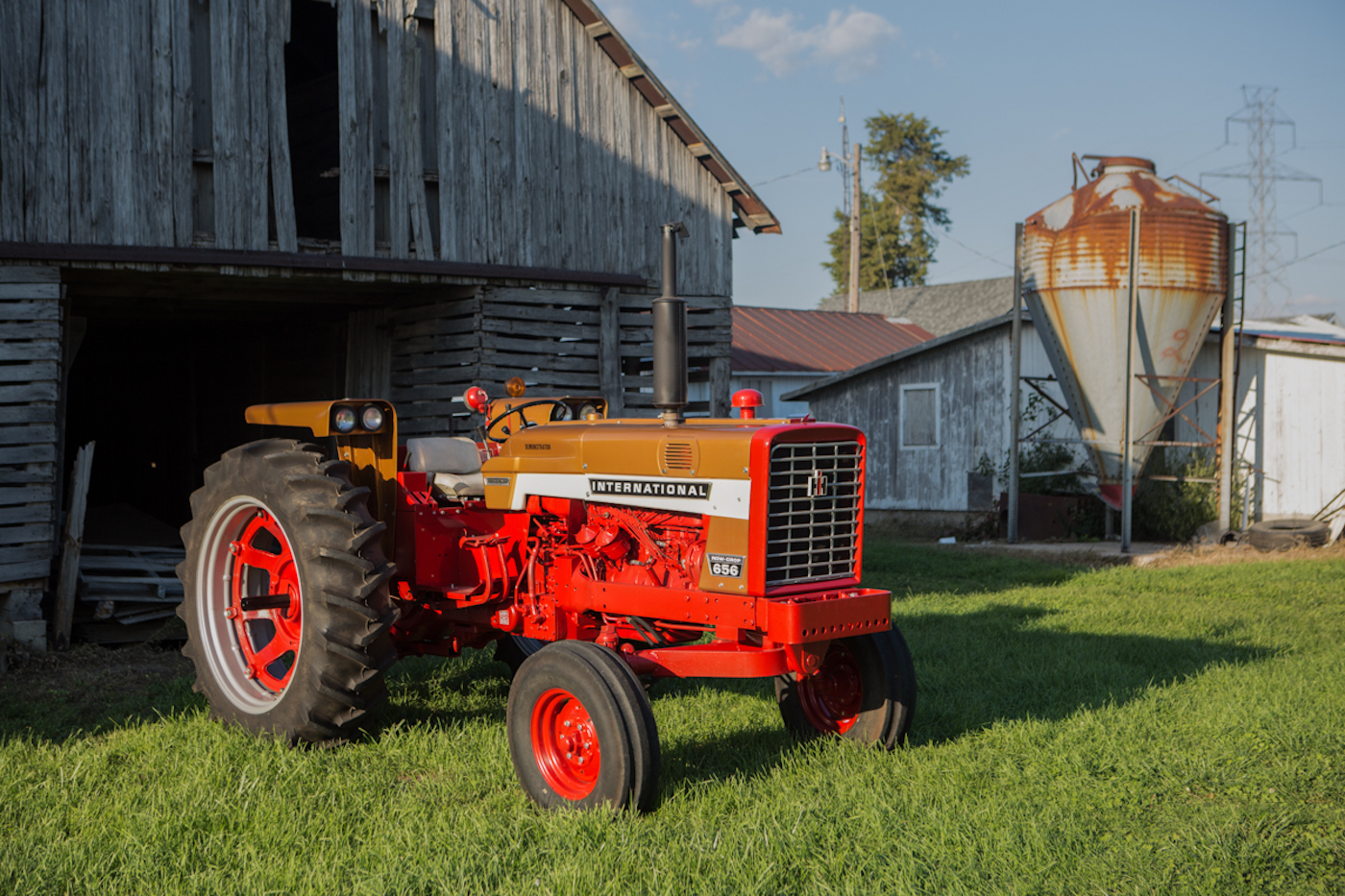
A 656 Gold Demonstrator. Lee Klancher
To avoid disastrous starts using the clutch pedal when the speed-ratio lever was well forward or reversed, engineers designed a system that gradually pressurized the pump as the clutch pedal was released. This ingenious feature simulated the controlled release of a mechanical clutch through its friction point. Initially included as a safety precaution, and to make the 656 Hydro’s controls seem more acceptable, the clutch was marketed as a convenience for creeping up to attachments and precision loader work. One downside to the 656 Hydro models was that they were not as fuel-efficient as their gear-driven siblings.
Utility and row-crop versions of both gear-drive and hydrostatic-drive 656 tractors were produced into the 1970s. The last Farmall version was built in 1972, while the last International version rolled off the assembly line in 1973. The 656 was replaced by the new Model 666, first available in 1972 with a pair of new engines and several other improvements.
To find out the rest of the incredible story of International Harvester, get your copy of Red Tractors 1958-2022 here!


